
Supplies you’ll need:
- A canvas or paper primed for acrylic paint. (I prepared a piece of bristol paper using acrylic matte medium).
- A few tubes of acrylic paint—especially black.
- Paint brushes. I always like having a liner brush for fine details.
- Paint palette.
- A small object to draw from life.
Step 1: Paint your canvas black.
Most canvases come in white or off-white, so we’ll need to first paint our canvas black. Use a black pigment that’s a matte finish so that once it’s dry, it won’t appear glossy. In addition, it’ll be easier to draw on. Make sure that the black paint is thick enough to cover the paper or canvas. Apply one layer of paint and then wait for it to dry. Once dry, apply a second layer. You shouldn’t see any white beneath them.Step 2: Draw the outline of your subject.
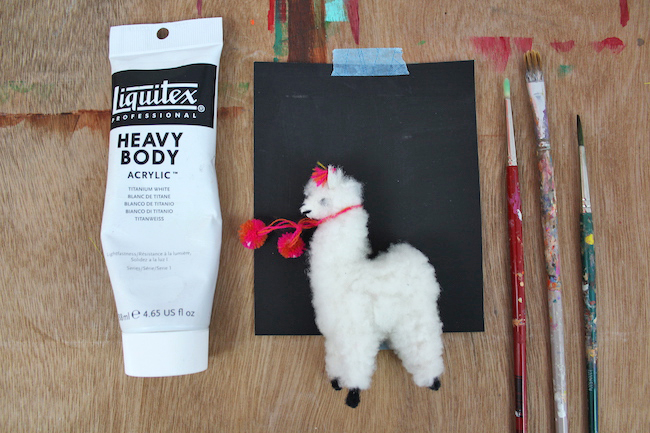
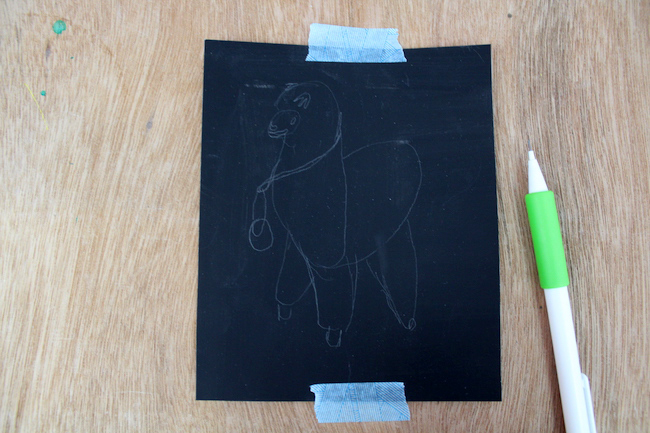 For this tutorial, pick a simple object to paint. I like working from life, so I picked a little llama statue I had in my studio. But whatever you pick, select something that’s light in color. That way, it’ll really pop off the black canvas.
Draw what’s in front of you. If you used matte paint on your black background, you should be able to easily see the graphite lines. Don’t worry about erasing them later—the acrylic paint will cover it.
For this tutorial, pick a simple object to paint. I like working from life, so I picked a little llama statue I had in my studio. But whatever you pick, select something that’s light in color. That way, it’ll really pop off the black canvas.
Draw what’s in front of you. If you used matte paint on your black background, you should be able to easily see the graphite lines. Don’t worry about erasing them later—the acrylic paint will cover it.
Step 3: Start to work in reverse.
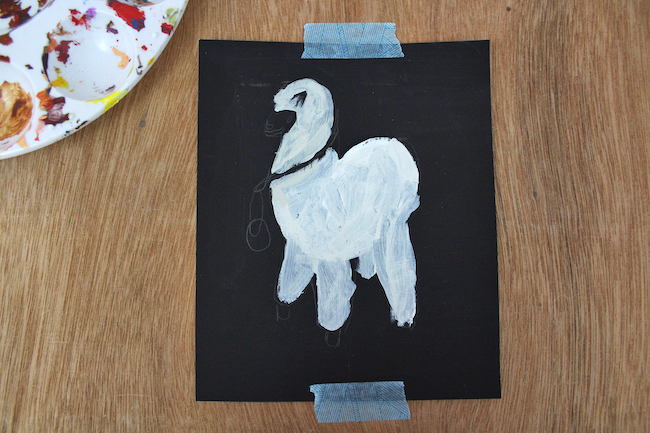 Keep the phrase “work in reverse” in your head as you create this painting. Because we’re starting on a dark canvas, we’ve already achieved the darkest tone of the piece. So, everything we do will be going backwards from darkest to light—or, black to white.
Like other painting projects, work in thin layers of paint. This will add depth to your picture and ensure that you preserve your blackest areas. Then, before you begin, assess your subject. Are there any areas that can remain black? For me, the llama’s eyes were black, as were its feet. In painting the first layers of my piece, I left them alone.
Keep the phrase “work in reverse” in your head as you create this painting. Because we’re starting on a dark canvas, we’ve already achieved the darkest tone of the piece. So, everything we do will be going backwards from darkest to light—or, black to white.
Like other painting projects, work in thin layers of paint. This will add depth to your picture and ensure that you preserve your blackest areas. Then, before you begin, assess your subject. Are there any areas that can remain black? For me, the llama’s eyes were black, as were its feet. In painting the first layers of my piece, I left them alone.
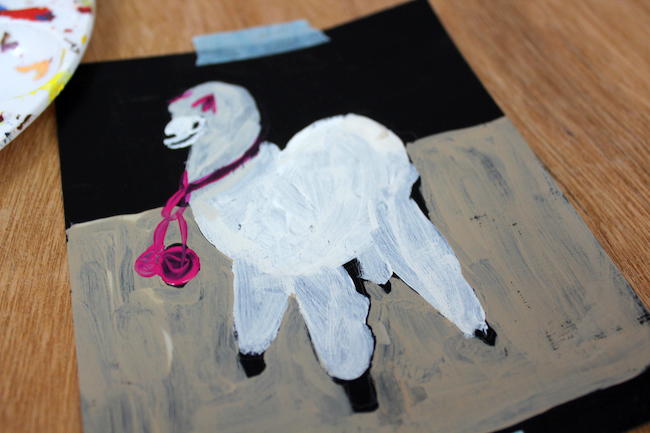 Tip: For this painting, don’t be afraid to leave large areas of the black canvas showing through. It will add a sense of drama to your piece!
Tip: For this painting, don’t be afraid to leave large areas of the black canvas showing through. It will add a sense of drama to your piece!
Step 4: Build on your base.
 Once you’ve hit the middle of your painting, this process should be similar to other artwork that starts with a white canvas. You’ll continue to build tone and texture, except that you’ll gradually add lighter tones to your subject—rather than dark. Once you’re painting the highlights, you know that you’ve reached your full tonal range.
Once you’ve hit the middle of your painting, this process should be similar to other artwork that starts with a white canvas. You’ll continue to build tone and texture, except that you’ll gradually add lighter tones to your subject—rather than dark. Once you’re painting the highlights, you know that you’ve reached your full tonal range.
Step 5: Clean up your lines with black paint. (Optional)
 If you left generous areas of your painting black, it’s easy to take a liner brush to clean up any lines that got messy or fuzzy during the process. It’s also a do-over opportunity; if you feel like you need to redo an area, just paint over it with black, let it dry, and start again!
If you left generous areas of your painting black, it’s easy to take a liner brush to clean up any lines that got messy or fuzzy during the process. It’s also a do-over opportunity; if you feel like you need to redo an area, just paint over it with black, let it dry, and start again!
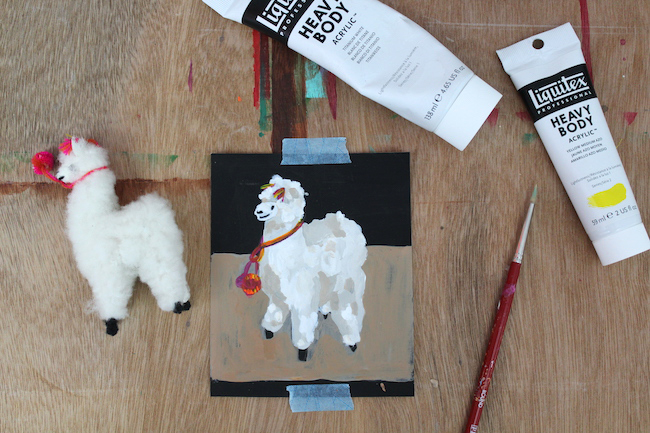

This is really good! Thinking of buying some black paper....I like the shadows on the llama.